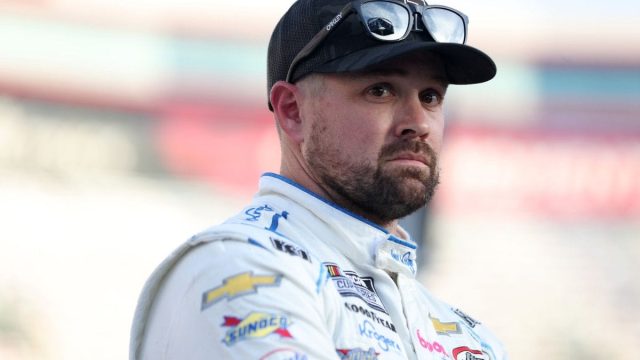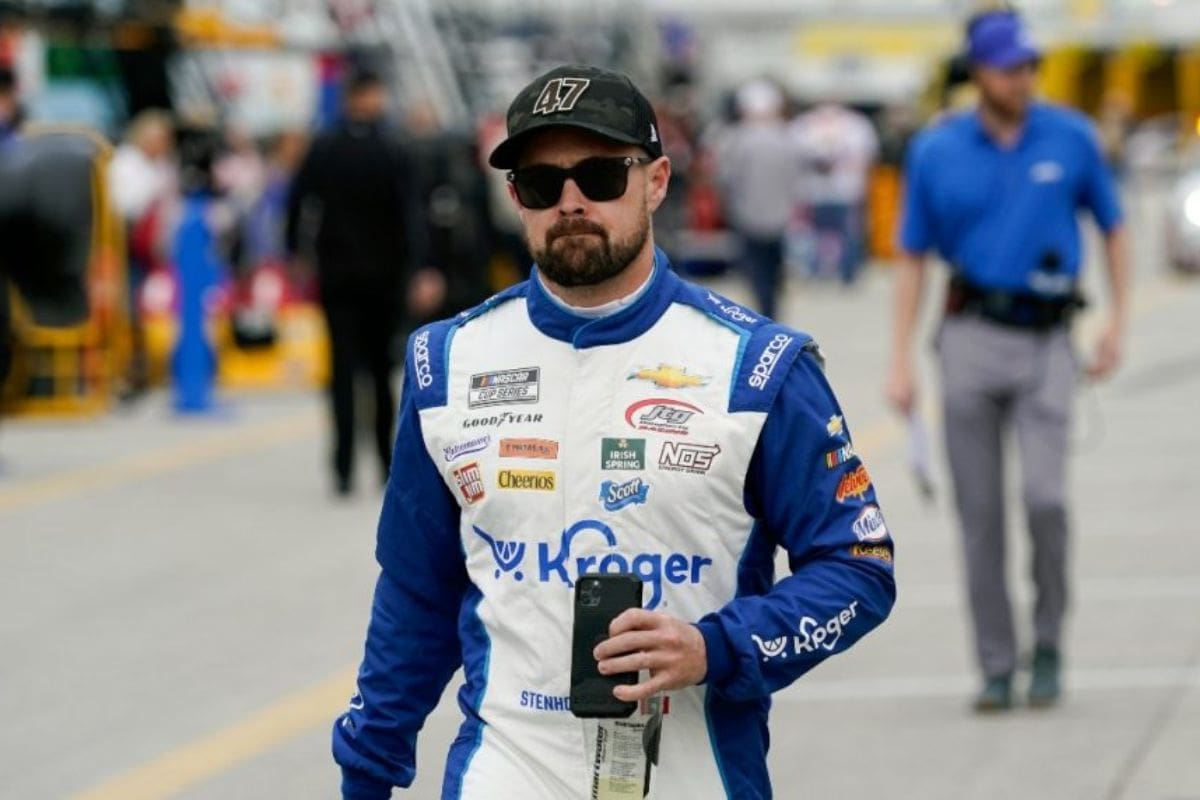Ricky Stenhouse Jr. and Austin Dillon’s Crash: Ricky Stenhouse Jr.‘s recent admission of regret regarding his collision with Austin Dillon raises critical questions about the interplay of ambition and responsibility in NASCAR. Stenhouse’s aggressive driving, while aimed at seizing victory, inadvertently disrupted Dillon’s playoff path, showing the potential consequences of racing decisions. This incident affected Dillon’s season but also prompts a broader examination of the accountability drivers bear towards their competitors. As the racing community reflects on the implications of such actions, one must consider how these dynamics shape both individual careers and the sport’s integrity moving forward.
Key Highlights
- Ricky Stenhouse Jr. acknowledged that his aggressive driving negatively impacted Austin Dillon’s chances in the playoffs.
- Stenhouse expressed regret for initiating the chain reaction that affected multiple competitors, including Dillon.
- The Richmond race highlighted the importance of balancing speed with strategic awareness in racing.
- Stenhouse’s actions led to a 25-point penalty for Dillon, complicating his playoff aspirations.
- Stenhouse’s apology emphasizes the need for accountability and humility in the racing community.
Ricky Stenhouse Jr.’s Overambitious Move
Although ambition often drives success in motorsports, Ricky Stenhouse Jr.’s overambitious move during the Richmond Raceway Cup Series race proved to be a miscalculation with far-reaching consequences.
In the environment of professional racing, the desire to seize the lead can lead to critical errors, particularly when drivers underestimate the dynamics of their surroundings. Stenhouse Jr.’s decision to aggressively pursue the lead lane exemplified this precarious balance between ambition and reckless abandon.
The Richmond race showed the brutal reality of motorsports — speed is paramount, but so is strategy. Stenhouse’s enthusiasm to navigate into a position of dominance led to a chain reaction that not only jeopardized his own race but also greatly impacted other competitors.
In the tightly contested arena of the Cup Series, such moves can create a ripple effect, where one driver’s ambition translates into chaos on the track. Stenhouse’s maneuver, initially perceived as a bold tactical play, quickly morphed into a source of conflict, culminating in a violent clash that had ramifications extending beyond his own performance.
Ultimately, this incident highlights a critical lesson for all competitors: the line between ambition and overreach is thin and often blurred.
The Domino Effect and Austin Dillon’s Role
Ricky Stenhouse Jr.’s aggressive maneuver not only disrupted his own race but also set off a chain reaction that considerably impacted Austin Dillon’s playoff aspirations. The contact made with Ryan Preece triggered a caution flag, which ultimately led to an overtime restart. This unforeseen situation created a high-stakes environment that intensified the competition among key drivers, including Dillon, Denny Hamlin, and Joey Logano.
The resulting domino effect from Stenhouse’s actions highlights the interconnected nature of racing dynamics. Each driver’s strategy and performance became intertwined, leading to a critical moment that altered Dillon’s course. As the race unfolded, the stakes were raised, with Dillon attempting to secure points necessary for his playoff bid. However, the aggressive racing that ensued during the restart ultimately stifled Dillon’s chances, illustrating how one incident can reverberate throughout the field.
Stenhouse Jr.’s Reflection and Apology
In the aftermath of the race, Stenhouse Jr. found himself reflecting on the consequences of his aggressive driving and the unintended impact it had on not only his own performance but also on Austin Dillon’s playoff hopes.
Unlike Dillon, who staunchly defended his actions during the final laps despite the backlash, Stenhouse recognized the need for introspection. He sought to distance himself from the fray of criticism that engulfed Dillon, choosing instead to focus on his own racing philosophy and the lessons learned from the incident.
Stenhouse’s approach to the wreck involving Ryan Preece contrasted sharply with the tumult surrounding Dillon. While Dillon’s defensive stance drew ire from peers and fans alike, Stenhouse’s quiet contemplation allowed him to acknowledge the gravity of the situation without escalating tensions.
“Preece hovered on my rightward quarter panel. Just didn’t get clear of them so I had to regroup and start running again and then when I got back to Preece at that moment you know the 3 was kinda picking on the inside. And inner in turn 1 pretty low. So, I look at where he is trying not to impede him too much but stay on lead lap. I just entered the corner. Probably I have car width higher than I needed.” – Stenhouse
He expressed regret for the role he played in Dillon’s misfortune, understanding that racing is not merely about individual performance but also about the broader implications on competitors’ careers.
“I called lately this week and apologized for that. That was horrible for those guys obviously they had the classics of cars. Went to the care center, I got out and was like damn I hope that the 3 won. I saw he did so I was pumped about that. And then I saw the way he did and was like eh hope NASCAR doesn’t do anything to it. But you know what I mean, it is what it is now, you know just felt really bad for the whole 3 team and Austin for sure.” – Stenhouse
Ricky Stenhouse Jr. said he called Austin Dillon to apologize for the wreck with Ryan Preece that brought out the late caution at Richmond. Stenhouse said he entered the corner a littler higher than he needed to and got into Preece. pic.twitter.com/HxFHz25XAN
— Bob Pockrass (@bobpockrass) August 17, 2024
His reflections revealed a depth of understanding concerning the sport’s intricate dynamics. Stenhouse admitted that aggressive driving can produce immediate results, but it often comes at the expense of long-term relationships and reputations within the racing community.
This acknowledgment is crucial for a driver in a sport where fellowship is as pivotal as competition. Stenhouse’s subsequent apology highlighted his commitment to accountability, setting a precedent for fellow competitors to adopt humility in the face of adversity.
Austin Dillon’s Consequences and NASCAR’s Response
The aftermath of the incident not only affected Stenhouse Jr.’s perspective but also resulted in notable consequences for Austin Dillon. His failure to acknowledge the gravity of the situation and to offer an apology, coupled with his defense of his spotter’s comments, drew considerable examination. This reluctance to take responsibility did not go unnoticed by NASCAR, which promptly took action.
The repercussions for Dillon were swift and severe, highlighting the league’s commitment to maintaining competitive integrity. Key consequences included:
- Playoff Elimination: Dillon’s hopes of competing for the championship were effectively dashed, impacting his team’s season objectives.
- Point Deduction: NASCAR penalized him with a loss of 25 Cup Series points, a considerable reduction that could influence his standing in future races.
- Owner Points Penalty: The same point deduction applied to his owner, further complicating team strategies moving forward.
- Reputational Damage: The incident tarnished Dillon’s image within the racing community, as his defensive stance raised questions about accountability.
- Increased Examination: Following the incident, Dillon faces heightened observation from both fans and officials, likely affecting his mental approach in subsequent races.
NASCAR’s decisive action emphasizes the organization’s intent to uphold the sport’s competitive spirit. Dillon’s situation serves as a cautionary tale, illustrating that in the high-stakes world of NASCAR, accountability is paramount and consequences can be severe for those who fail to recognize their role in the broader narrative.
Noah Gragson’s Accident and the Caution Drama at Richmond
Amidst the intense competition at Richmond Raceway, Noah Gragson’s accident on lap 303 highlighted the precarious nature of high-speed racing. As he navigated the track, the 25-year-old driver experienced a sudden brake failure, a harrowing situation that rendered him unable to control his vehicle. In a split instant, Gragson was confronted with the crucial challenge of avoiding a head-on collision, a decision that ultimately led him to collide with the outer concrete wall.
The implications of Gragson’s incident were substantial, not only for his own race but also for the broader context of the event. The caution that ensued from his accident contributed to a series of late-race dramas at Richmond, an arena known for its unpredictable nature.
“Noah’s health is the highest of priorities and we commend him for making the decision to sit out this weekend,” – co-owners Maury Gallagher and Jimmie Johnson
Moreover, Gragson’s misfortune serves as a poignant reminder of the inherent risks of NASCAR, where machinery can fail despite the best preparations. As the racing community reflects on this incident, the balance between speed and safety remains a focal point.
Gragson’s experience emphasizes the need for constant innovation in vehicle technology and safety protocols to mitigate such risks, ensuring that drivers can compete at the highest levels without compromising their well-being.
News in Brief: Ricky Stenhouse Jr. and Austin Dillon’s Crash
The incident involving Ricky Stenhouse Jr. and Austin Dillon serves as a reminder of the intricate dynamics within NASCAR, where ambition can swiftly morph into recklessness. Stenhouse’s regret highlights the necessity for drivers to balance competitive zeal with foresight, as their actions ripple through the standings of fellow competitors. The ramifications of such aggressive maneuvers extend beyond individual races, prompting a broader discourse on accountability and the responsibilities inherent in high-stakes motorsport.



